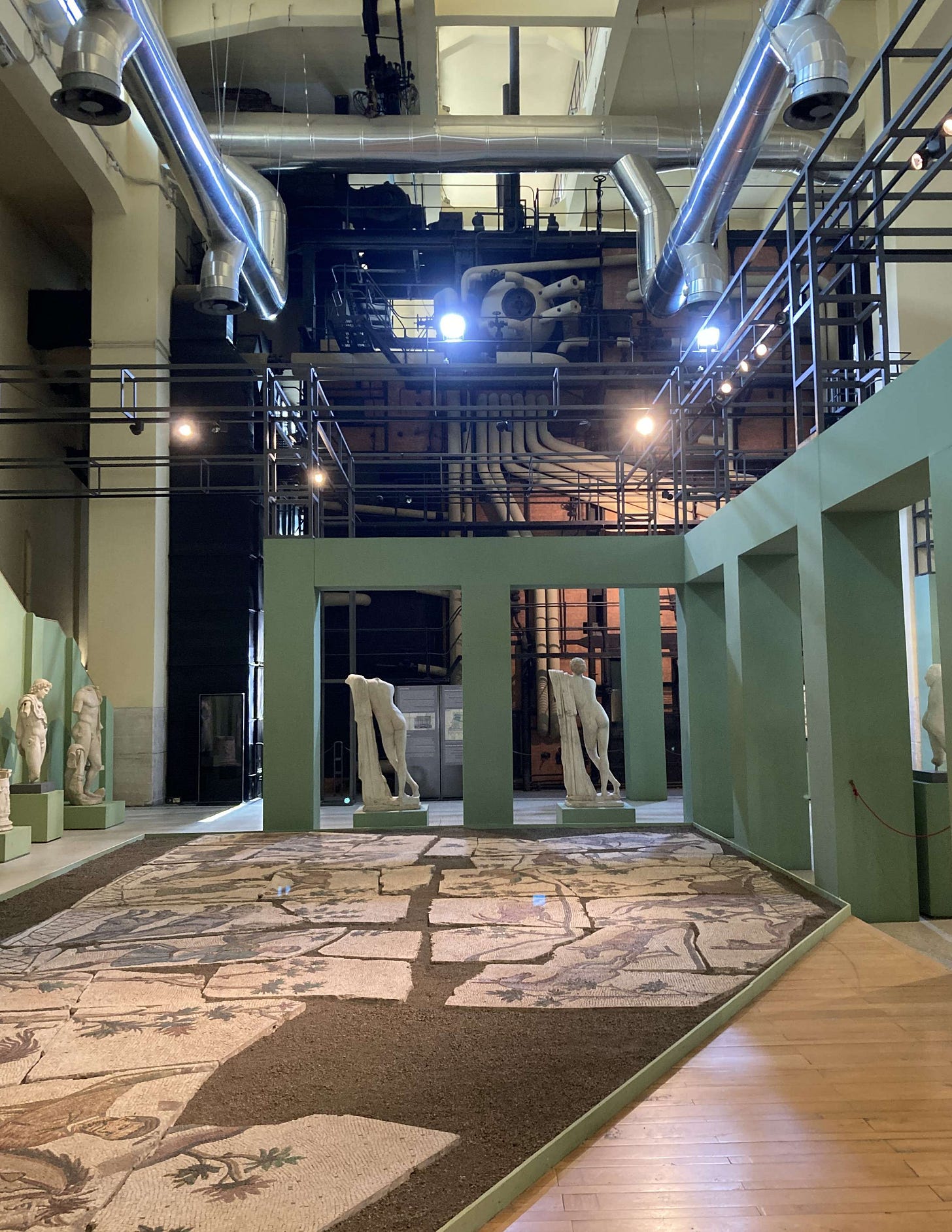Mysterious mosaics
Are there really pineapples in ancient Roman artworks? (4 minute preview, 8 minute read)
I remember the first time I saw, and ate, a pomegranate. My grandfather had been to visit his sister who lived on an orchard in West Auckland. He probably brought back other fruit, but I remember only the pomegranate. It was round but slightly lumpy, as if it had suffered a few knocks, and had a hard skin coloured in a mottled pinkish brown. At one end, there were the jagged remnants of the flower, as if the fruit was wearing a crown too small for its head. It was an unpromising sight.
Then my grandfather broke it open, and I saw the wonder inside. The fruit was packed with individual seeds, each surrounded by translucent red flesh. I took one and tasted the flesh – it was sweet, sharp and aromatic. Picking out the seeds and eating them felt like eating jewels.
I’ve loved pomegranates ever since that day. If I thought that there was any hope of ripening one in Wellington, I’d grow one in my garden. Alas, even Auckland is marginal for them. They demand a Mediterranean climate, tolerating cold during winter but demanding a long, hot summer to ripen the fruit.
Pomegranates are native to western and central Asia, including Türkiye, Georgia, Iran, Afghanistan and Turkmenistan. However, they’ve been cultivated in the Mediterranean for thousands of years – in fact the ancient Romans thought they came from North Africa. They are one of a number of fruits I associate with ancient Rome, as well as my own Dalmatian cultural heritage.
In Roman and Greek society, the pomegranate had complex and sometimes dark associations. In Greek mythology, Persephone was bound to return periodically to the underworld because she ate pomegranate seeds there, separating her from her mother, Demeter. The mother’s grief at being separated from her daughter was considered to be the cause of winter1. However, pomegranate was linked with other mythical women too, such as Hera, the goddess of marriage. Its abundant seeds carried connotations of fertility, yet the rinds were used as ingredients in contraceptives.
It's no surprise then, that the pomegranate turns up in Roman art. The first one I saw on my most recent visit to Rome was in the city’s strangest museum, the Centrale Montemartini. The exhibits in the museum are mostly normal for Rome, with lots of marble statues and mosaics, although the personal train of Pope Pius the Ninth was a little unexpected. What’s strange about the museum is that it’s in an old power plant, and there’s still a lot of the original machinery there. It was initially a temporary home for some of the sculptures from the Capitoline Museums, but people liked it so much, it became a permanent museum. It’s well worth a visit, both for the building and the exhibits, particularly the mosaics.
Roman mosaics fascinate me, and I think that they are my favourite form of Roman art. They range from fairly simple designs executed on a grand scale as the floors of public buildings, to exquisitely detailed artworks on the walls of the homes of the wealthy. Up close, they can appear almost abstract, simply pieces of coloured glass or stone pressed into a pale mortar. With increasing distance, the images come into focus as the individual pieces appear to merge. Some can be difficult to recognise as mosaics at a distance, so effectively do they capture light, shade and form.
It was in one of the mosaics, probably a floor mosaic from a home, that I spotted the pomegranate. It stood out as the most lifelike of the images in the mosaic. The artist had even depicted a gloss on the fruit’s skin.
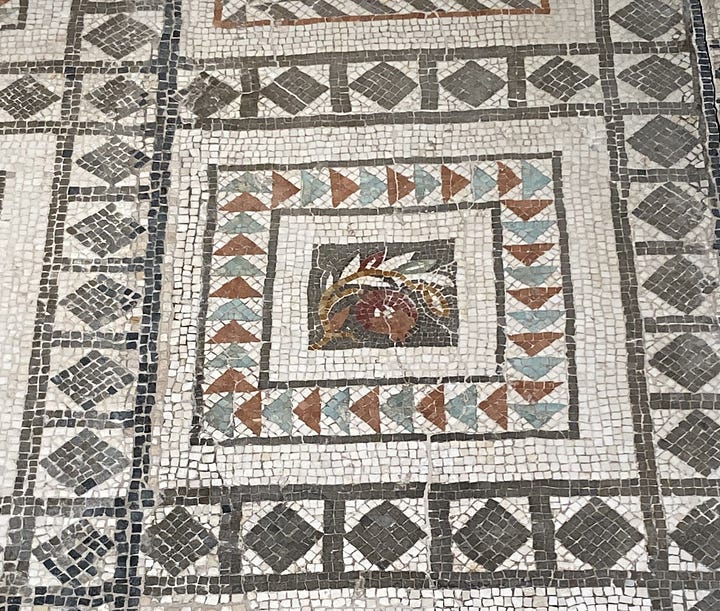
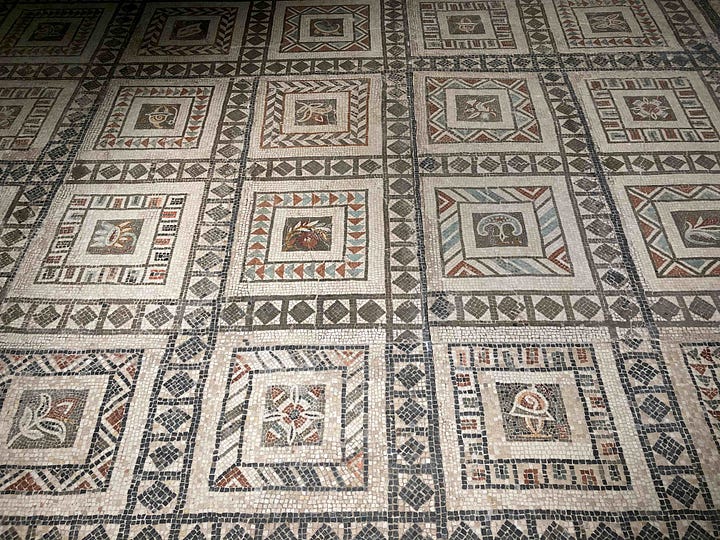
Apart from the acanthus leaf, which I wrote about last week, the most commonly depicted plant in Roman art was the grapevine. Like the pomegranate, it carried rich symbolic meaning, associated with the god Bacchus (or Dionysus in Greek) and with connotations of abundance and prosperity, rebirth, and, of course wine, drunkenness and wild rituals. Images of grapevines graced banquet halls and tombs, as well as crowning images and statues of Bacchus.
My favourite mosaic image of fruit is in the Palazzo Massimo, which I visited on my second-to-last day in Rome. This museum has an extraordinary mosaic collection, probably the best I’ve seen, and I’ve visited a lot of museums. One mosaic depicts four horses, their musculature rendered as beautifully as in a da Vinci drawing. Another captures the movement of the fabric of a dress, while others dazzle the eye with optical illusions.
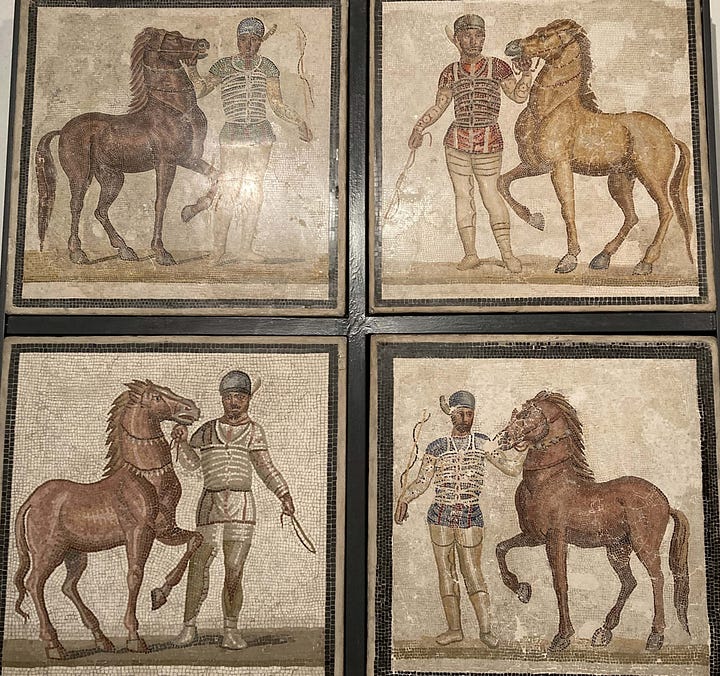

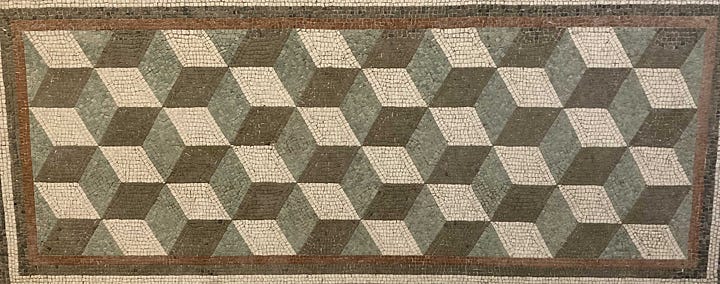
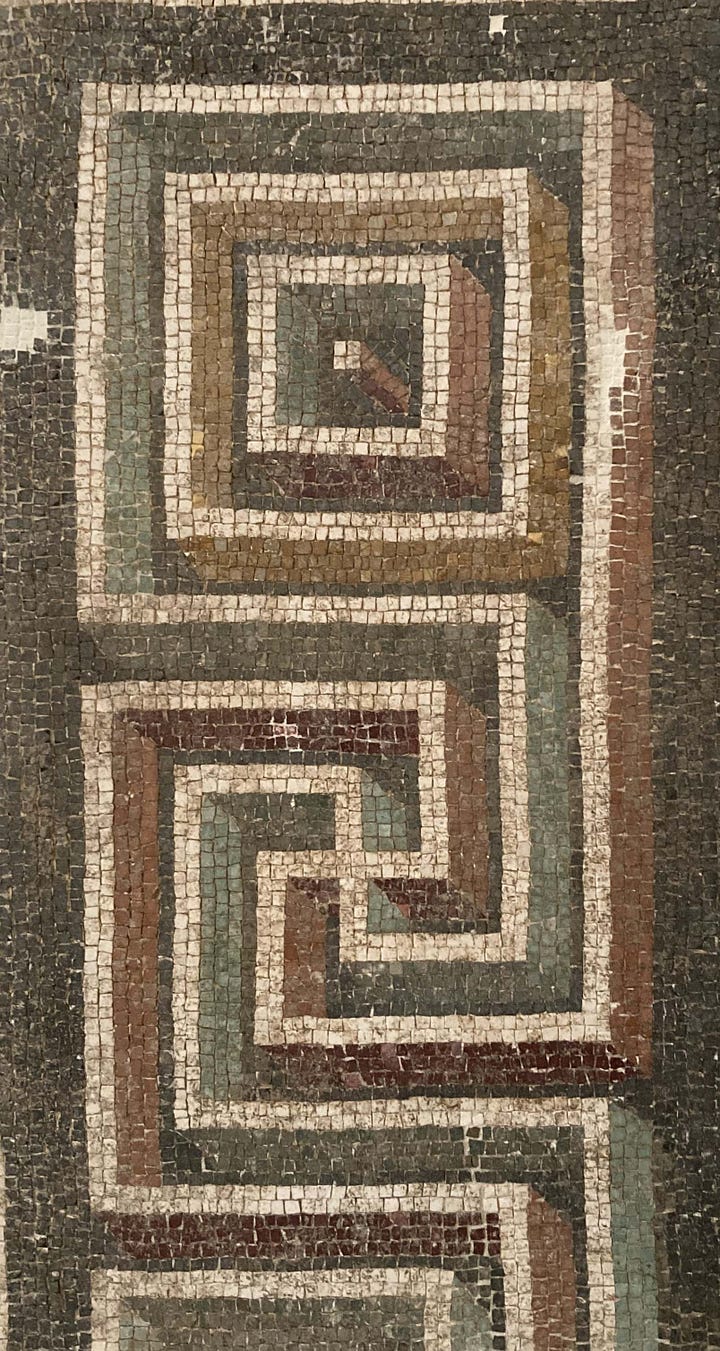
The mosaic fruit is part of a wider food-related image. It includes a couple of chickens, a pigeon, different kinds of fish, a sprig of leaves which might be olive or bay laurel, and a fruit bowl. In the fruit bowl are very obvious grapes, pomegranates and plump purple figs. There are some roundish shapes in pale yellow-brown which I’m really not sure about. And there’s something else, something which really shouldn’t be there. It looks very much like a pineapple. My perception is reinforced by another image in a mosaic at the same museum which also appears to be a pineapple.





